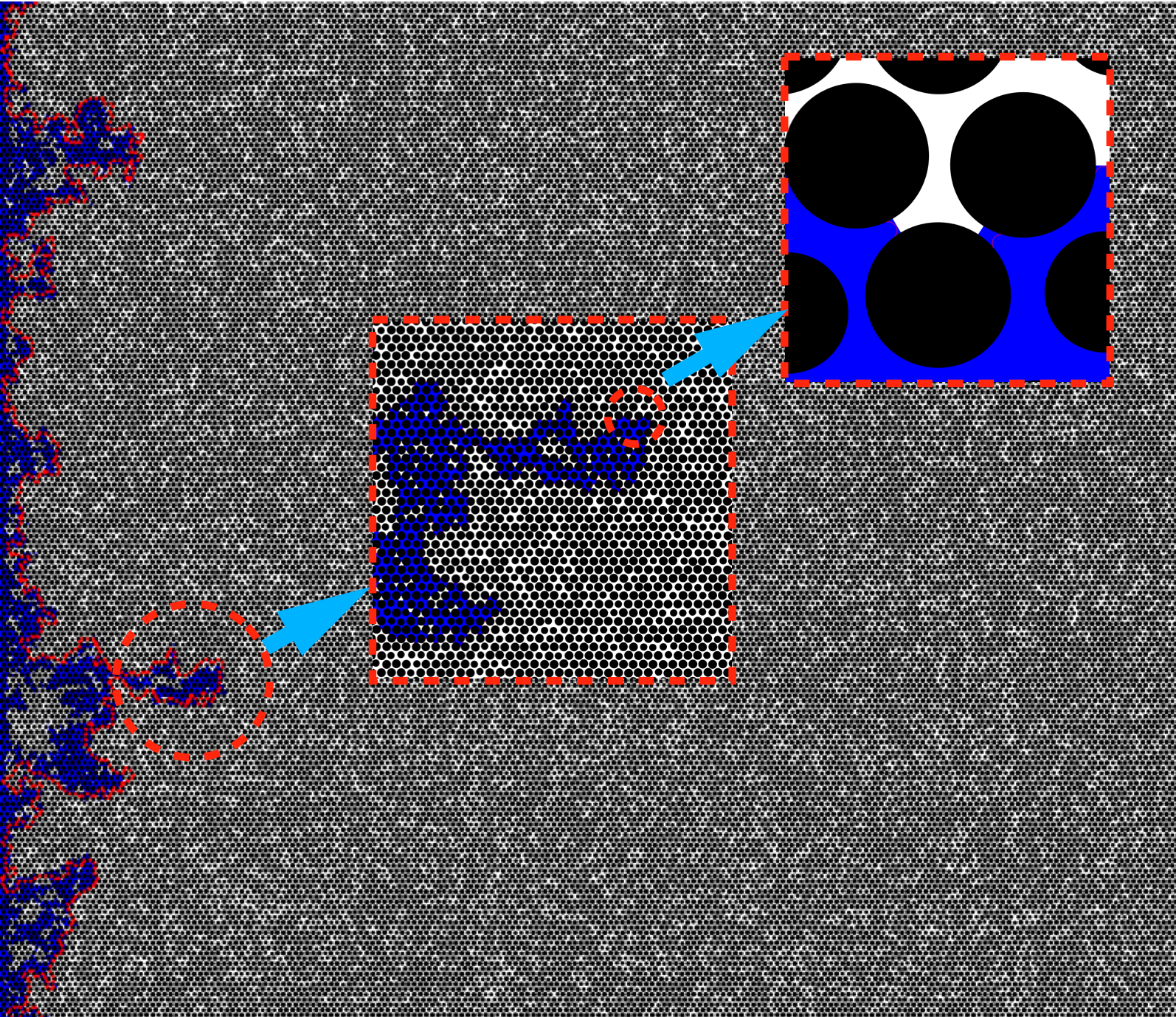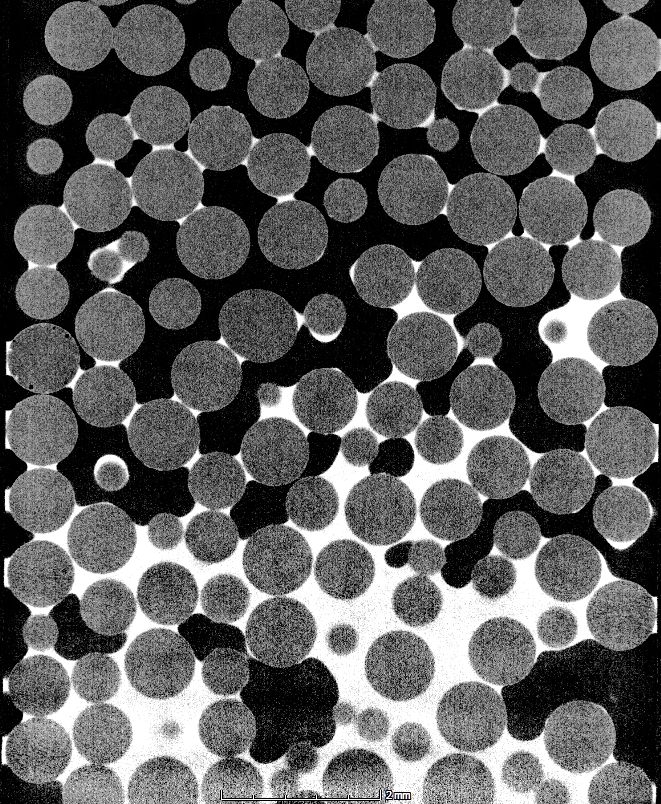AG Prof. Dr. Ralf Seemann
| |
|
Porous materials are ubiquitous in our daily life. Any material containing small voids and being permeable to fluids is referred to as permeable media. Studying two-phase flow in porous media is of great significance in diverse fields of industrial or natural processes including soil science, proton exchange membrane (PEM) fuel cells, and oil recovery. Understanding the dynamics of fluid invasion process is fundamentally hard due to the combined influences of wetting properties, pore geometry and surface roughness.
We aim at unraveling the interplay of wettability and geometry in determining the fluid invasion pattern with the help of X-ray tomography and numerical simulation. Starting from the ideal geometry of 3D spherical bead packs and homogeneous wettability, the complexity of the system is gradually increased by replacing the spherical beads with rounded sand grains or grains having angular shapes. Besides the geometry of the porous media, also the wettability of the invading liquid is altered by surface functionalization and the choice of different liquid combinations. In parallel, a corresponding pore-scale model resolving the pore-scale interface evolution is developed to investigate the influencing parameters with the purpose of linking the pore-scale invasion process to the global invasion pattern.


Group members on this project: Dr. Weiwei Li, Prof. Dr. Ralf Seemann
External collaborations: Dr. M. Brinkmann (Northumbria University), Stephan Herminghaus (MPI-DS Göttingen)
Funding: BP (ExPloRe)